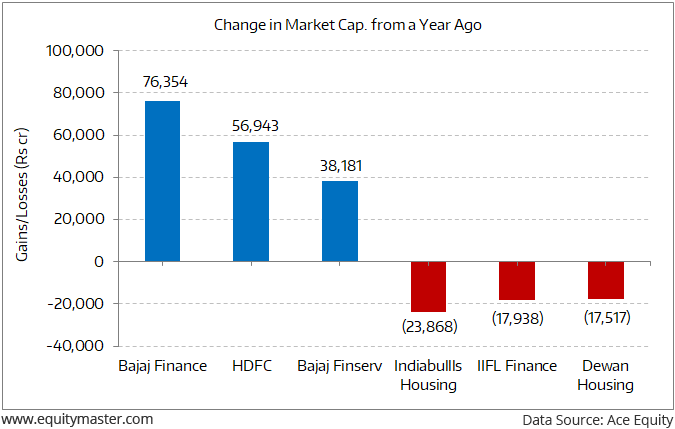India's Third Giant Leap
This Could be One of the Biggest Opportunities for Investors
- Home
- Todays Market
- Indian Stock Market News July 26, 2019
Sensex Opens in Red; Energy and IT Stocks Lose the Most Fri, 26 Jul 09:30 am
Asian share markets are lower today as Chinese and Hong Kong shares fall. The Shanghai Composite is off 0.1% while the Hang Seng is down 0.4%. The Nikkei 225 is trading down by 0.5%. Wall Street fell from record highs on Thursday following a flurry of downbeat quarterly results from Ford Motor and other companies and after European Central Bank chief Mario Draghi's comments disappointed investors hoping for a more dovish stance on monetary policy.
Back home, India share markets opened the day on a negative note. The BSE Sensex is trading down by 117 points while the NSE Nifty is trading down by 21 points. The BSE Mid Cap index opened down by 0.1%, while BSE Small Cap index opened down by 0.3%.
All sectoral indices have opened the day on a negative note with oil & gas stocks and IT stocks witnessing maximum selling pressure.
The rupee is currently trading at 69.10 against the US$.
The rupee depreciated by 6 paise to close at 69.04 against the US dollar on Thursday amid sustained foreign fund outflows and firm crude oil prices.
Prolonged weakness in the domestic equity markets and a strengthening greenback further weighed on the local unit.
At the interbank foreign exchange market, the rupee opened at 68.99 and went on to touch the day's high of 68.92 against the US dollar. The local currency, however, failed to sustain the gains and slipped to a low of 69.07, before finally finishing at 69.04, down by 6 paise against its previous close.
This is the fourth straight day of fall for the rupee, during which it has lost 24 paise.
Speaking of currencies, Vijay Bhambwani, editor of Weekly Cash Alerts, tells you the main reasons why not to trade commodities and currencies the same way you would trade equities. Here's an excerpt of what he wrote...
- Currencies are traded in pairs and the most liquid is the USDINR. Currencies are traded in four decimal points just as bonds are. The international derivative trader's association has indicated that forex may be traded in 6 decimals in the coming few years.
It takes months sometimes for the currency pair to pass the next round figure, say from 70 to 71.
Can you really trade commodities and currencies alike or for that matter, equities and currencies alike? Definitely not!
To know more, you can read Vijay's entire article here: Is Trading in Equities, Commodities, and Currencies the Same?
Moving on to the news from the NBFC sector. As per the Fitch Ratings, the central government's recent Budget 2019-20 proposal for a partial credit guarantee on asset purchases from non-bank lenders will ease funding pressure on the sector in the short term.
The initiative was announced in the budget presented earlier this month. It comes amid significant pressure on non-bank financial institutions (NBFCs) wholesale funding due to a lack of appetite in the debt capital markets.
Under the proposal, the government will provide a first-loss guarantee of 10% on securitised assets issued by NBFCs to banking entities to increase the flow of funds to NBFCs.
As per the report, the guarantee is more than enough to cover typical losses. The government will cover up to Rs 1 trillion (US$14.5 billion) of issuance.
Further, the provision refers only to financially sound issuers, which may suggest that weaker entities in need of funds may still have to fend for themselves.
The sector has become increasingly important for driving consumption growth and accounts for almost 20% of credit to India's economy, compared with about 15% five years ago.
Nonetheless, it has struggled with funding pressure as a result of investors' risk aversion following the default by Infrastructure Leasing & Financial Services last year, a situation exacerbated by Dewan Housing's default this year.
Speaking of NBFC crisis, a slew of corporate defaults, and the bloodbath in many stocks has left investors in deep fear and panic.
But this blanket approach doesn't work too well.
In the chart below, you can see top three NBFC gainers and losers (in terms of market capitalisation) over the last one year.
NBFC Crisis - Top Gainers and Losers
While several NBFCs have suffered badly and destroyed investor wealth, there have also been quality NBFC stocks that have been wealth creators.
So, the key takeaway here is to never write off an entire sector and to always stay on the lookout for quality stocks in sectors going through temporary headwinds.
To know what's moving the Indian stock markets today, check out the most recent share market updates here.
For information on how to pick stocks that have the potential to deliver big returns, download our special report now!
Read the latest Market Commentary



Equitymaster requests your view! Post a comment on "Sensex Opens in Red; Energy and IT Stocks Lose the Most". Click here!
Comments are moderated by Equitymaster, in accordance with the Terms of Use, and may not appear
on this article until they have been reviewed and deemed appropriate for posting.
In the meantime, you may want to share this article with your friends!